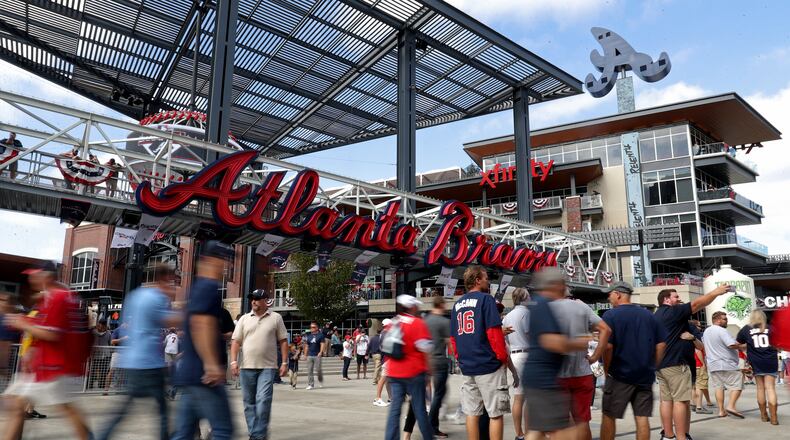Financial disclosures filed this week showed the Braves brought in a franchise-record amount of revenue last year, but also showed the team's growing debt.
According to an annual report filed by team owner Liberty Media with the U.S. Securities and Exchange Commission, the Braves had $559 million in debt on the books as of Dec. 31, up from $494 million at the end of 2018.
The team's debt at the close of 2019 included $304 million from the construction of SunTrust Park (now Truist Park), $180 million from the development of The Battery Atlanta mixed-use complex adjacent to the stadium, $30 million from construction of the new spring training complex in North Port, Fla., and $45 million for operations, according to Liberty Media's filing.
The Braves have “taken on a significant level of debt and increased expenses” because of the construction projects, Liberty stated.
The team’s debt load dipped to $470 million June 30, 2019, before climbing to $559 million by year’s end.
The added debt stemmed largely from ongoing construction of the second phase of The Battery, Liberty Media said. By completion, construction of that phase is expected to cost approximately $200 million.
Another factor was completion of the spring training facility. A privately funded $14 million Braves Academy building opened in December, completing the North Port complex.
Taxpayer money also paid hefty chunks of the construction cost of Truist Park and CoolToday Park, the spring-training stadium.
As previously reported, Liberty Media disclosed that the Braves' revenue increased to $476 million last year, up 8% from $442 million in 2018. The company attributed the revenue boost primarily to higher attendance and higher local and national broadcast rights fees.
About the Author
Keep Reading
The Latest
Featured




